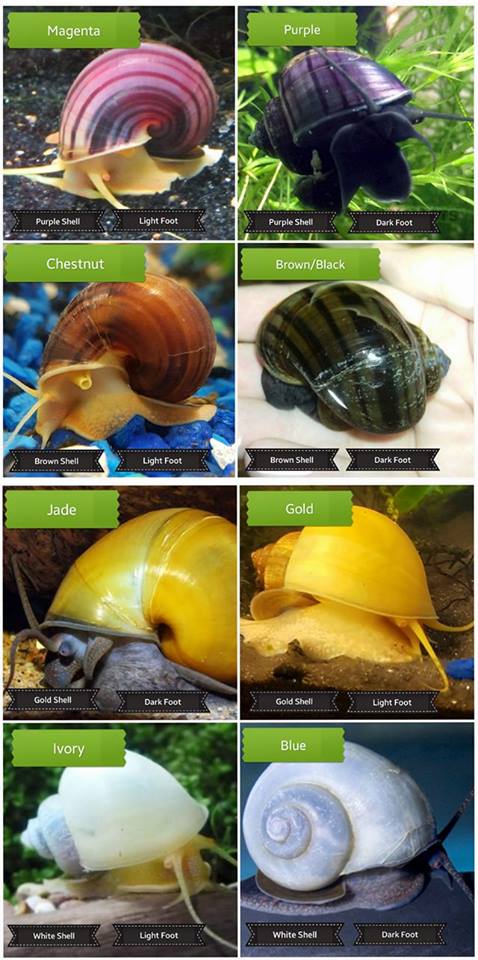A two-minute refresher on genetics.
Methods, Phase (1)
Methods, Phase (2)
How I'd do it, but my wife won't let me.
An open letter to the breeders and distributors.
Download this entire website as a [PDF] document.
Almost everybody has been exposed to some genetics, at some point in their lives. I feel pretty sure you all remember that most organisms of all sorts, including people and snails, are diploid, which means that they have two sets of chromosomes, one from mom and one from dad. And that the genes are on the chromosomes. So that (simplifying a bit) all diploid organisms have two sets of genes.
 The complete set of all the genes held by an organism is called its genotype. The appearance of an organism is called its phenotype.
Some fraction of an organism’s phenotype is controlled by its
genotype. Trying to figure out the details of that (deceptively
simple) term “some fraction” is basically what geneticists have done
since 1866 and what continues to be our main job today.
The complete set of all the genes held by an organism is called its genotype. The appearance of an organism is called its phenotype.
Some fraction of an organism’s phenotype is controlled by its
genotype. Trying to figure out the details of that (deceptively
simple) term “some fraction” is basically what geneticists have done
since 1866 and what continues to be our main job today.But one of the more irritating things about Genetics, which I taught at the college level for 35 years, is that the meaning of the word “gene” has become confused. The term is used in several different ways, to mean several different things, even by professional geneticists. So, let’s clarify.
For the sake of the remainder of this section, we will substitute the (more precise) word “locus” for the (ambiguous) word “gene.” A locus is a place on a chromosome that encodes a trait. Then to re-state the fourth sentence in the first paragraph, all diploid organisms have two sets of loci.
And let’s introduce a second (more precise) word, “allele.” An allele is one of at least two alternative messages at a locus. I’ll bet that you all remember that an organism with two matching alleles is called a homozygote. And an organism with two mismatched alleles is called a heterozygote. You probably all also remember that alleles can be recessive (two copies required for the organism to manifest a trait) or dominant (only one copy required.)
So since the birth of Genetics back in 1866, geneticists have had a problem. Suppose an organism shows the dominant phenotype. Is that organism homozygous dominant, or is it heterozygous? The way we have always answered this question is with a test cross.
A test cross is, simply, crossing an organism that shows a dominant phenotype to an organism that shows a recessive phenotype. If all the offspring of the dominant-phenotype parent also manifest the dominant phenotype, that parent must have been homozygous. If the parent with the dominant phenotye has babies with both the dominant and recessive phenotypes, that parent must have been heterozygous. The ratio of the dominant and recessive phenotypes in the offspring in the latter case is expected to be 1:1.
Here in the MSCG Project, we will work out the inheritance of color polymorphism in Pomacea diffusa using test crosses.
You’ll also find little bit of additional jargon on this website, and in correspondence with me, regarding generation times. I’m calling the snail that you start with the “mother” snail. Her babies are called the F1 generation. And let’s call all babies born from a single egg mass an F1 sibship. (A sibship is a clutch of brothers and sisters.) In Phase (2) of the MSCG Project, we’re planning to rear and intercross specially-selected subsets of F1 offspring. We’ll call the offspring from a pair of F1 snails the F2 generation.
Up next... Hypothesis.